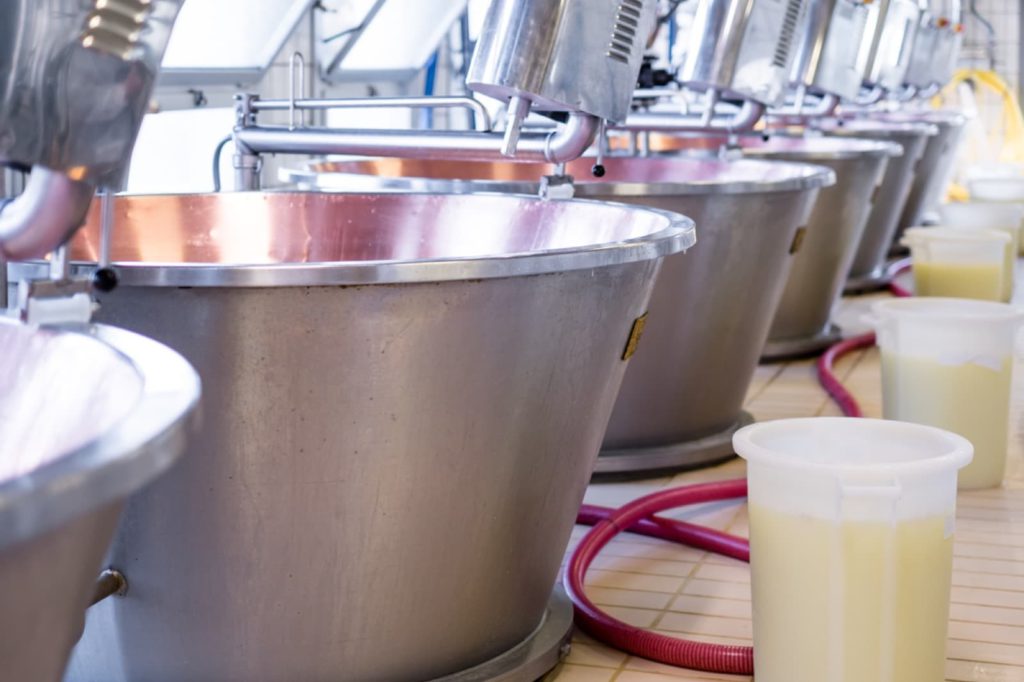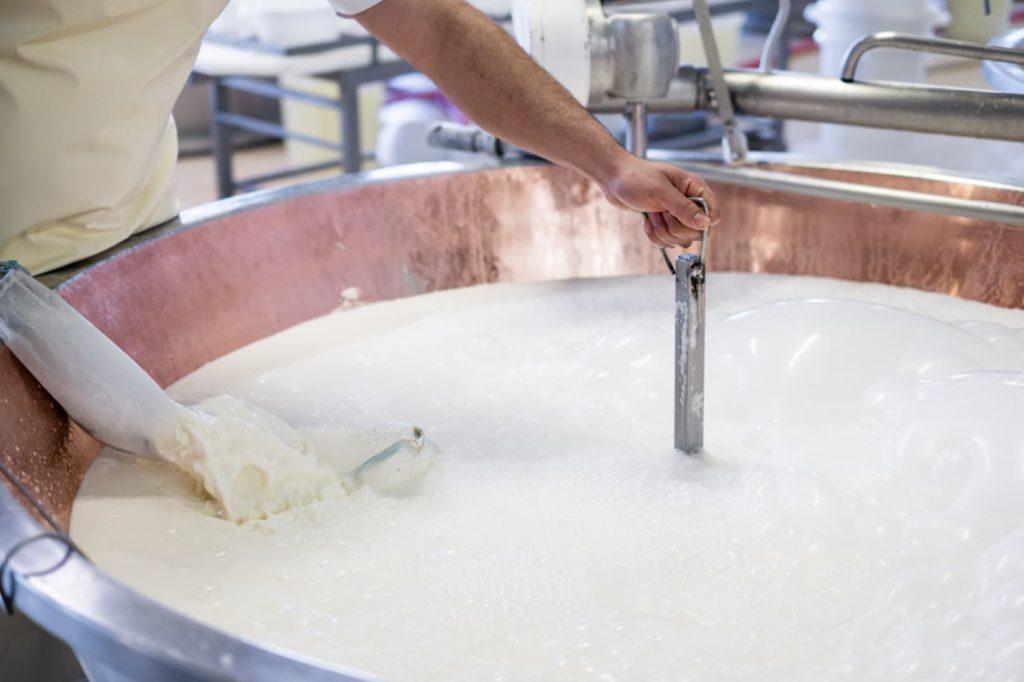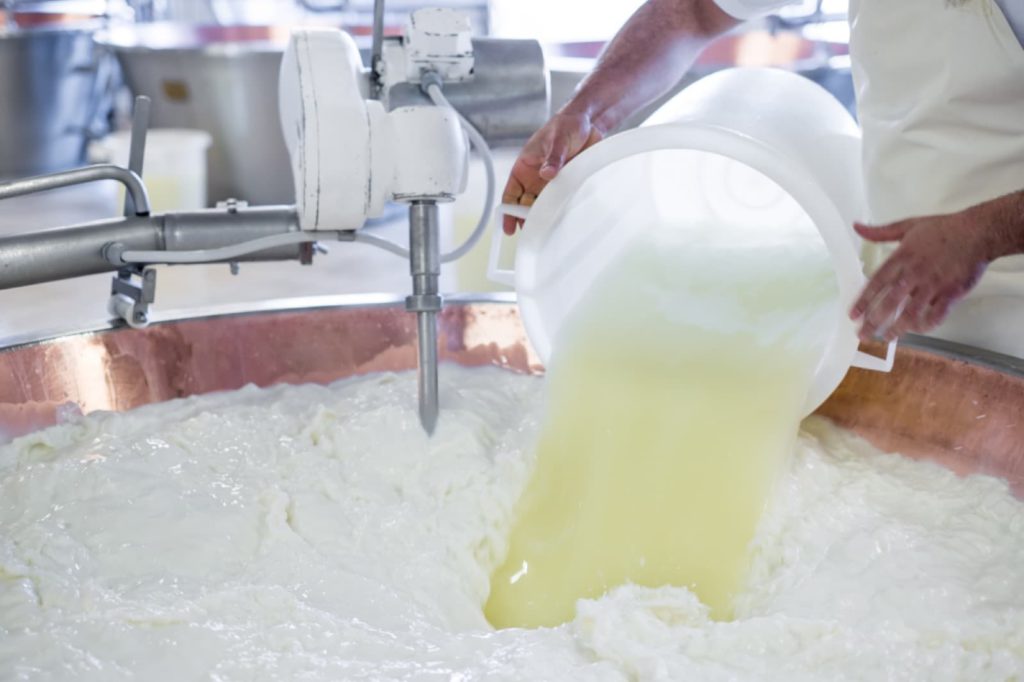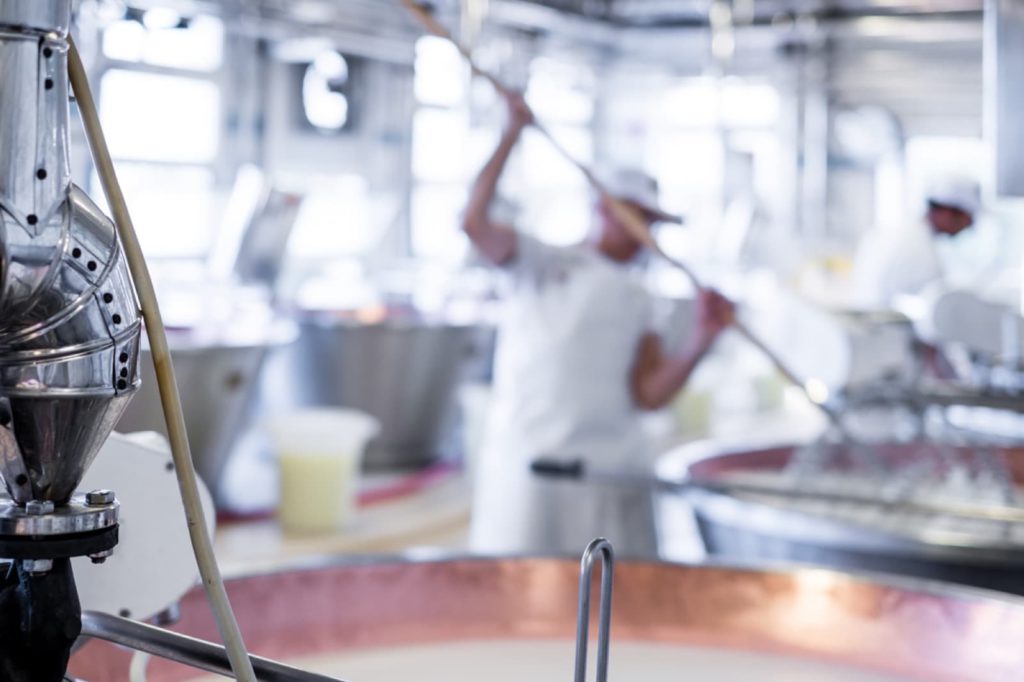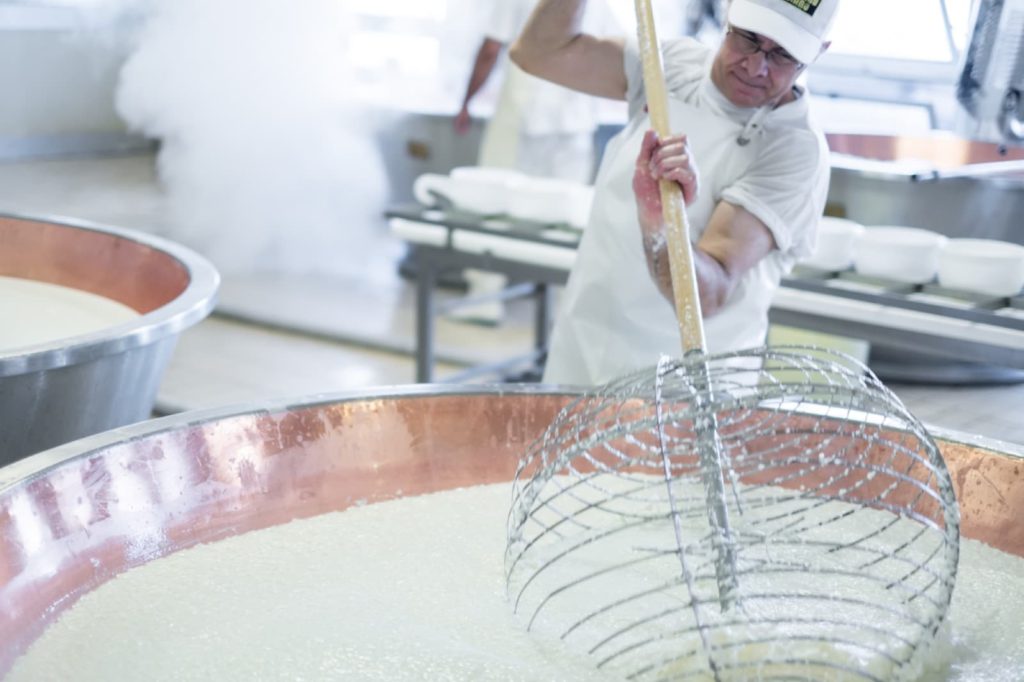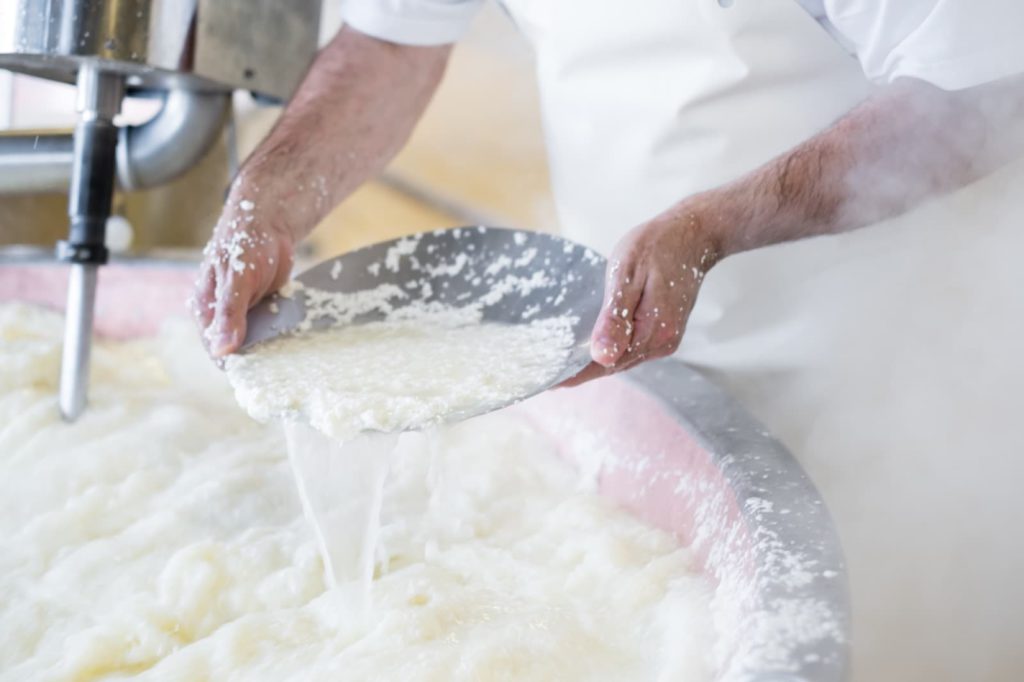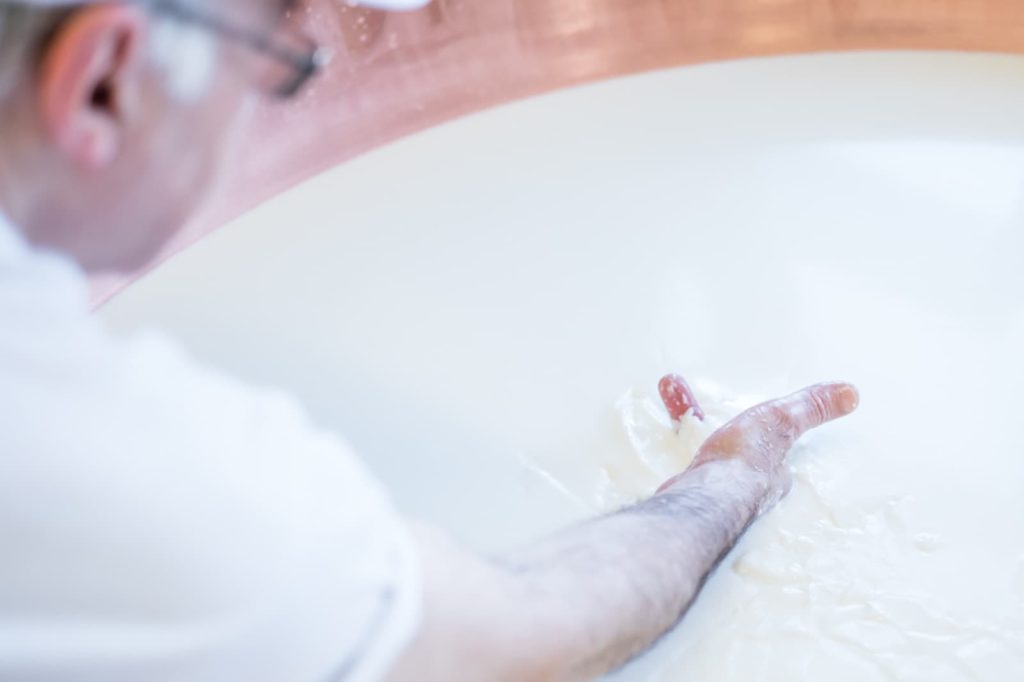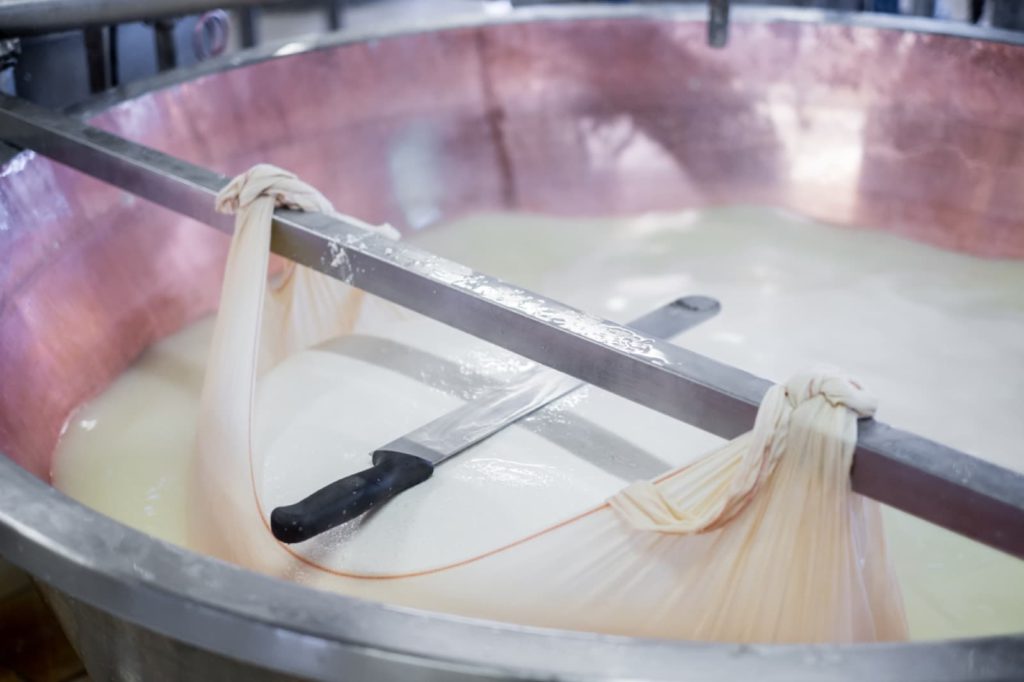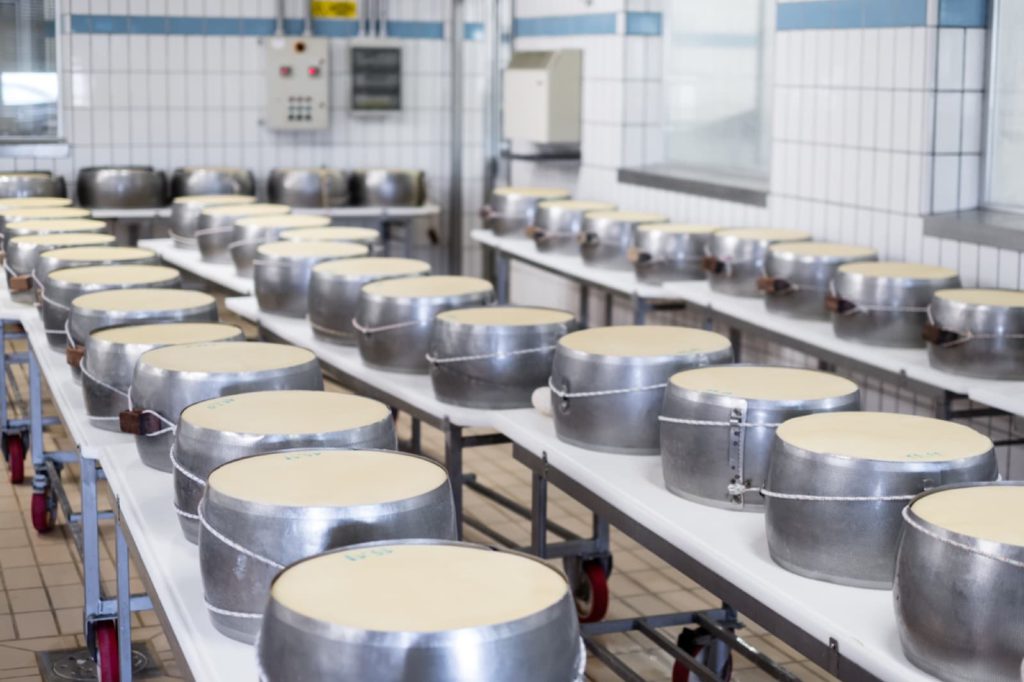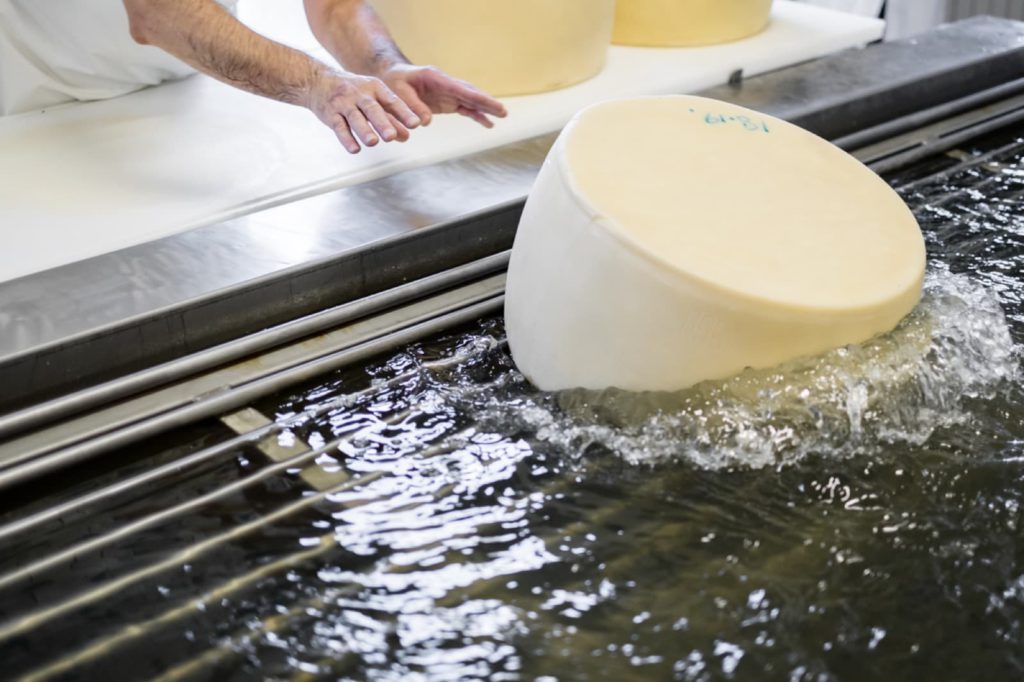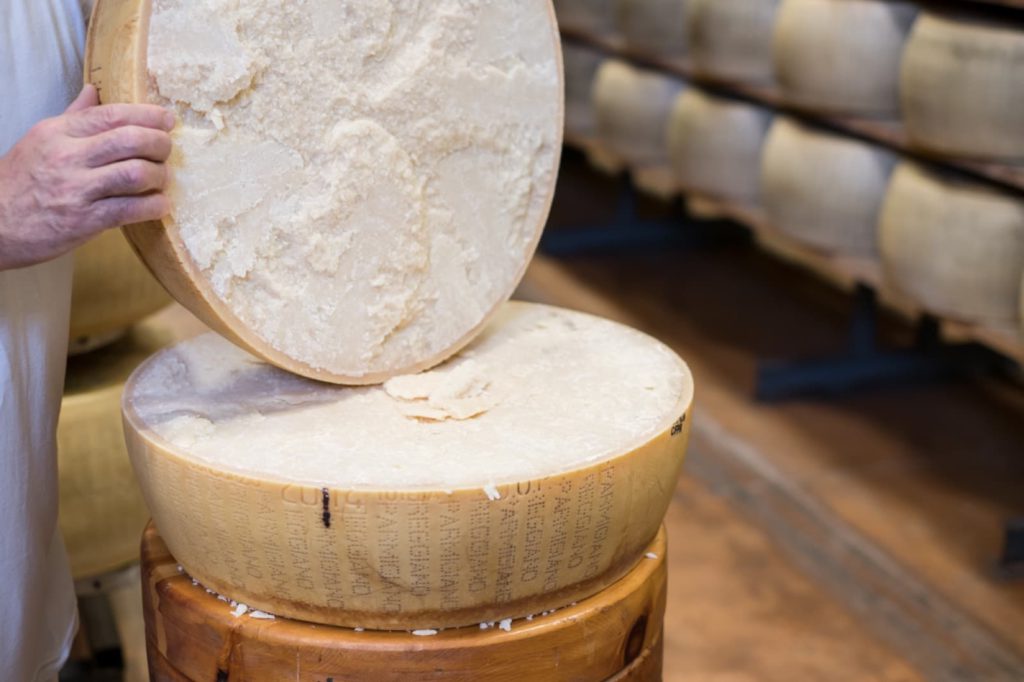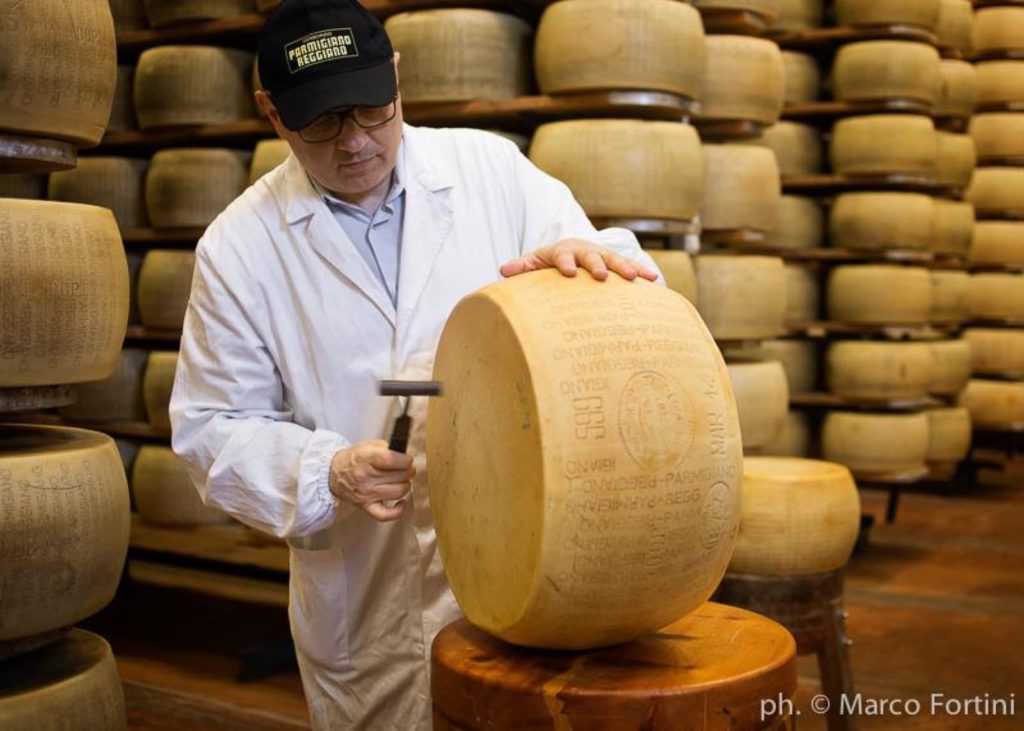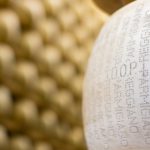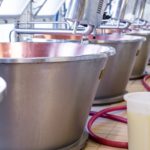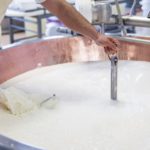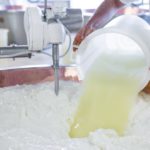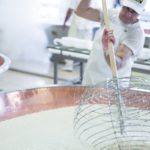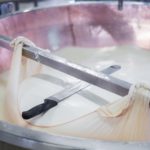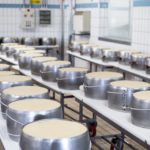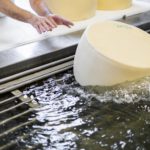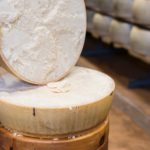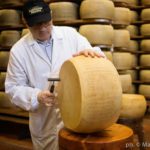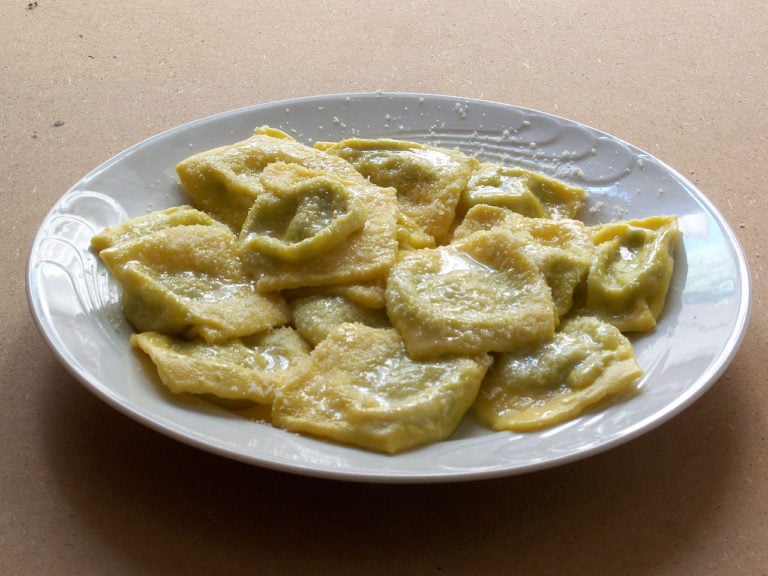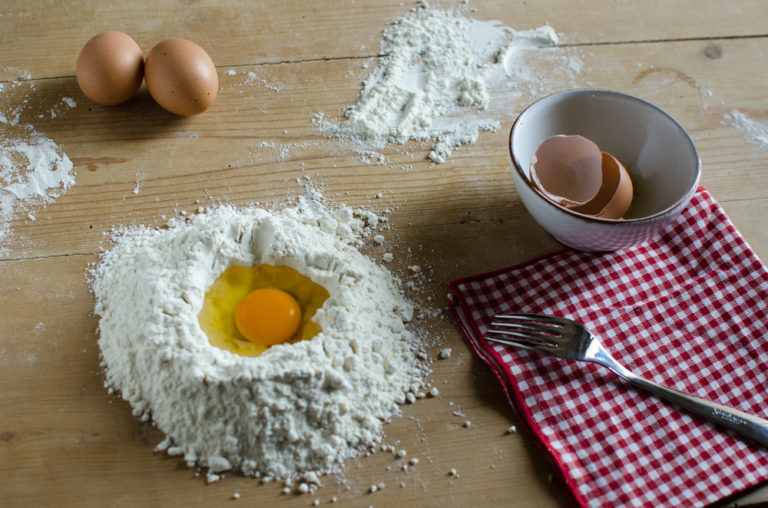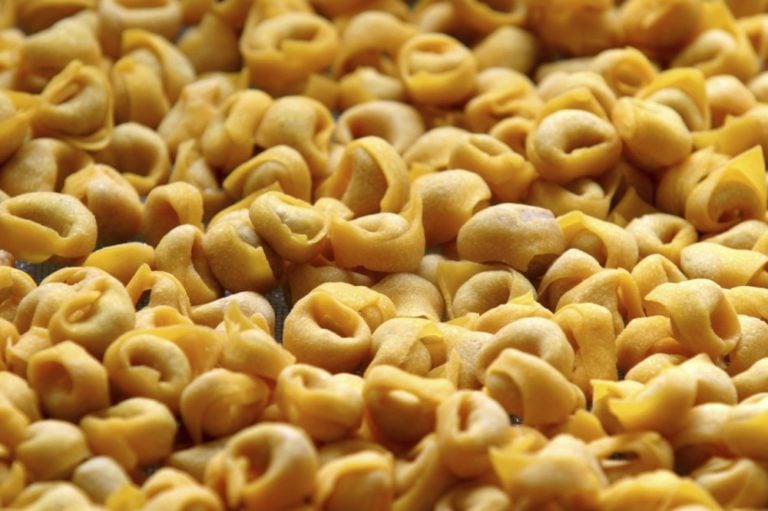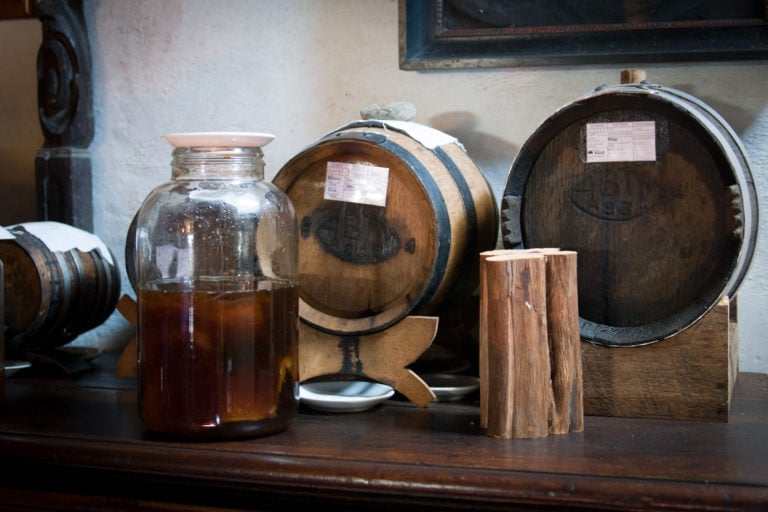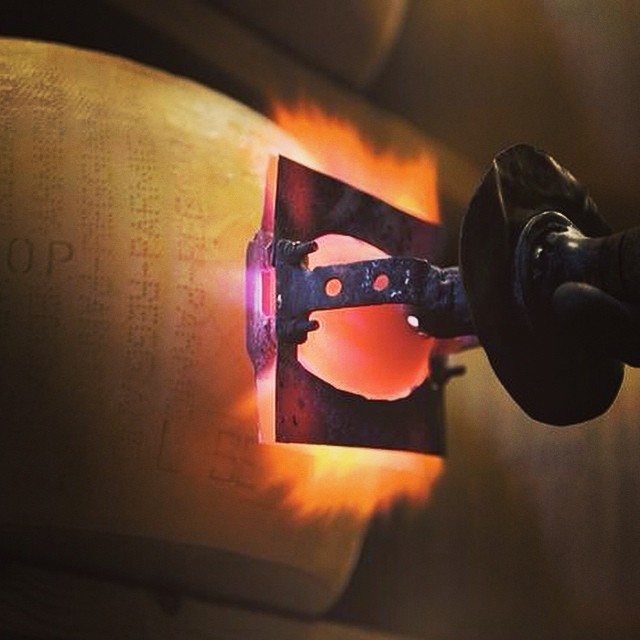Witnessing the birth of a wheel of Parmigiano Reggiano is always an emotional experience!
The production process begins early in the day when the morning’s milk and the milk from the previous evening are poured into the typical copper vats, shaped like an inverted bell.
Rennet and a starter whey rich in natural lactic bacteria, obtained from the previous day’s processing, are then added to the milk. The curd is broken down into tiny granules using an ancient tool called a “spino” before being cooked until it reaches 55°C.
After about 50 minutes, the curd granules begin to settle at the bottom of the vat, forming a single mass. Thanks to the quick and skilled teamwork of the cheesemakers, this mass is then divided into two twin wheels.
Each wheel follows a precise and separate process:
- it is wrapped in the typical linen cloth;
- it is placed in a mold that gives it the famous round shape;
- it is registered with a casein plate bearing a unique alphanumeric code, ensuring its identification at all times;
- it is submerged in a saturated solution of water and salt, through which it is salted by osmosis.
Once this procedure is complete, the aging process begins, lasting a minimum of 12 months, the longest of any cheese. Some wheels are aged for as long as 36, 40 months, or even more.
At the end of the aging period, each wheel must pass an inspection called “espertizzazione.” An expert uses a small hammer to tap the wheel, checking for any internal defects.
Suitable wheels are then fire-branded with the appropriate mark, officially becoming Parmigiano Reggiano DOP (Protected Designation of Origin).
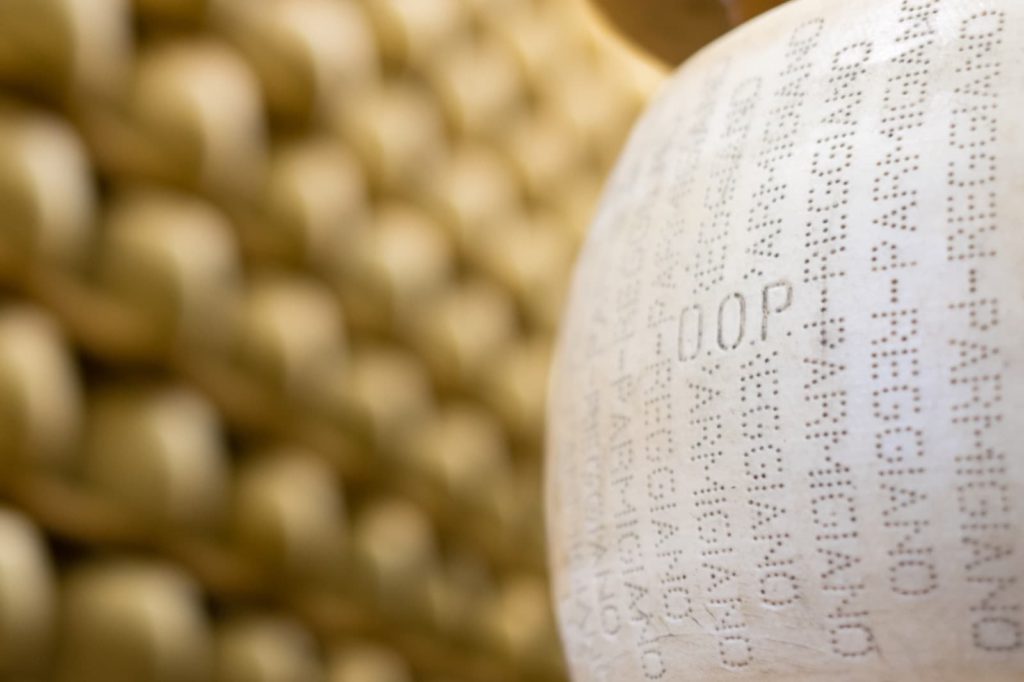
Parmigiano Reggiano | Credit: Camilla Bertuzzi
Parmigiano Reggiano, production process | Credit: Camilla Bertuzzi
Parmigiano Reggiano, production process | Credit: Camilla Bertuzzi
Parmigiano Reggiano, production process | Credit: Camilla Bertuzzi
Parmigiano Reggiano, production process | Credit: Camilla Bertuzzi
Parmigiano Reggiano, production process | Credit: Camilla Bertuzzi
Parmigiano Reggiano, production process | Credit: Camilla Bertuzzi
Parmigiano Reggiano, production process | Credit: Camilla Bertuzzi
Parmigiano Reggiano, production process | Credit: Camilla Bertuzzi
Parmigiano Reggiano, “fascere” | Credit: Camilla Bertuzzi
Parmigiano Reggiano, salting process | Credit: Camilla Bertuzzi
Parmigiano Reggiano, opening of a wheel | Credit: Camilla Bertuzzi
Parmigiano Reggiano, “espertizzazione” | Credit: Marco Fortini
In order to be recognised as a PDO, the cheese must not only comply with the production process described above, but must also be produced in a defined geographical area. True Parmigiano Reggiano must be produced exclusively in the provinces of Parma, Reggio Emilia, Modena, Bologna to the west of the Reno River, and Mantua to the east of the Po River.
Here, farms are concentrated, and the cattle are fed with controlled forage according to the production regulations.
CASEIFICI APERTI, THE EVENT
If you’re curious to see, smell, and taste firsthand all the stages of this slow and delicate process, simply mark the date on your calendar and book your spot.
Saturday 12 and Sunday 13 April 2025 “Caseifici Aperti” returns, a weekend dedicated to the King of Cheeses, during which many dairies will open their doors to the public. Visitors can enjoy guided tours of the production process and aging warehouses, open dairies, children’s events, and delicious tastings.
For more information, you can visit the official website at parmigianoreggiano.com/dairies-caseifici-aperti
PS: Throughout the year, it’s always possible to book a tasting tour at the dairies. To reserve, click HERE. Some dairies also have online shops.
Author

Elisa Mazzini
Social Media Manager for @inEmiliaRomagna and full-time mom.
You may also like
What to eat in Parma
by Alessandra Pradelli /// February 14, 2018
Acetaie Aperte 2025: the journey into the Balsamic Vinegar of Modena
by Staff /// August 18, 2025

Interested in our newsletter?
Every first of the month, an email (in Italian) with selected contents and upcoming events.
5 food experiences not to be missed in Emilia Romagna
by Elisa Mazzini /// September 6, 2016
